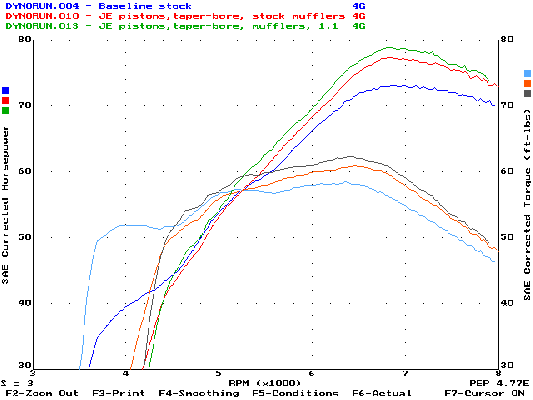
There are some interesting problems involved with tuning motorcycles. They go beyond the obvious, quest for power increases.
On the one hand, no-one has any extra money, so, you need to offer the best bang-for-the-buck, (performance/dollar), on the other hand, motorcyclists like shiny objects, (I refer to that as 'Varmint Theory') and insist on believing that the objects are what add the Horse-power. The problem occurs when I learn that the power isn't dependent on the shiny parts.
I've stayed away from selling the crap out of the accessories (there isn't much margin in Ducati tuning stuff anyway) and concentrated on learning what helps and what doesn't.
Unfortunately, the customers are often disappointed when the bike isn't dripping with accessories. It's hard to convince them that they may not need to spend the money on a lot of the components they (WANT) expect to buy.
There is another factor here, I'm stubborn enough not to just 'bin' any expensive component.
The case in point is stock carbs. For more on that subject see; carbs
In spite of the success I've had with extensively 'built' engines, the engines which have had only 'drop-in', 11:1 pistons have been a bit disappointing. When I had an opportunity to put one together with hi-compression pistons and taper-bore carbs, I decided to perform a more complete battery of tests (it needed to be broken-in anyway.)
Only one other performance adjustment was made, I advanced one cylinders cam to match the other. A total of two degrees.
First step, baseline. Next, build. Re-test.

This chart shows all tests with stock mufflers. The bike had 'regular' fuel (89 octane) in the tank, so it 'pinged' (pung?) The CO indicated quite rich, but not enough to kill much power. So, I installed a pair of Pederzini 1.1 modules which retard the timing by 2 degrees. It still pinged.
Next step, switch to 92 octane gas, then add slip-ons. (FBF low carbon)

This shows a good improvement with slip-ons, no change in power with the switch to Premium fuel (but, no pinging.)
Next step, 92 octane gas, 1.1 modules, then back to stock modules (advancing ignition timing) and then changing main-jet and retarding ignition timing at the pick-ups.
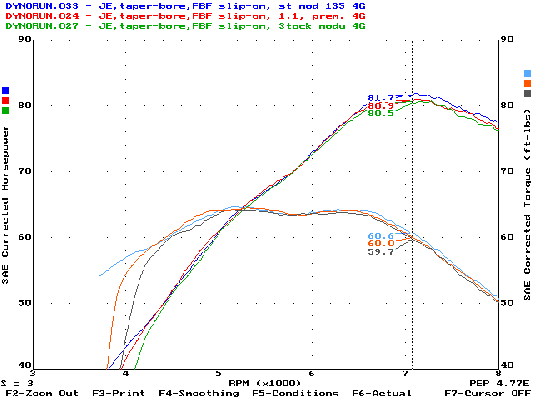
Notice that there isn't too much difference caused by advancing the timing, when the fuel doesn't detonate.
I retarded the timing about 3 degrees at the pick-ups and went down 2 steps on the main-jet. Small gain!
Next tests, the worst and best from the previous chart, plus, remove the air-box top.
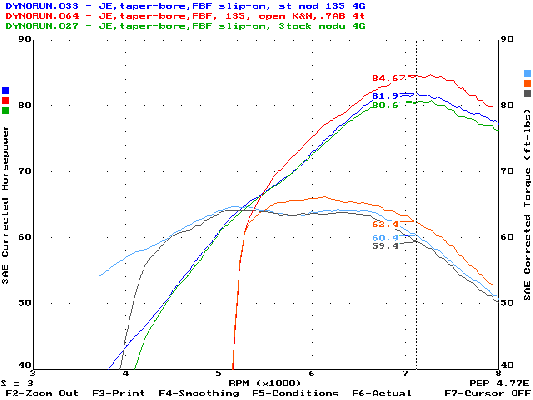
Here is a point where I disagree with the common knowledge. Most people think that the reason open airboxes improve the power, is because they increase the air-flow. With this test, (and previous tests of the same variables) I noticed little to no change in CO, which, indicates a minimal change in restriction.
With all of the work I've done on many different bikes/carbs, a small change in airbox restriction nets a large change in fuel delivery. This is a result of the difference in carb-mouth to float-bowl pressure.
So, the minimal difference in CO implies a very small change in restriction. What is the difference? Air-box resonance!
Notice the increase in torque at 5800 RPM as well as the improvement at 7000 RPM. The torque curve has lost its 'waves'. The stock airbox is resonating and the resonance goes away when the top is removed. (the airbox volume goes infinate with no top!)
Being the stubborn person that I am, I've resisted using this 'open air-box' conversion since the proper K&N has been available. Frankly, the lack of any reasonable means of attachment of this system has 'pissed me off'!
Therefore, my reasoning about not using the open air-box because I didn't think it made a major difference in airflow, appears to be correct, but I overlooked another effect, Helmholz resonance.
OK, I'm an idiot. But, the next chart shows an all-gear run before and after all of the changes.
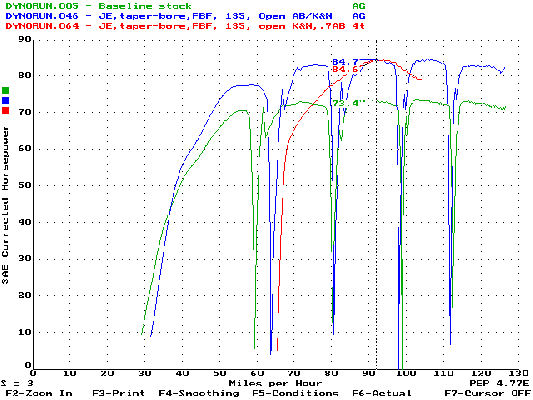
There is (always) one little glitch. With different throttle opening conditions, I can get a difference of almost three HP across the power peak. After some playing around with the main air bleeds I got a calibration where I could reliably, make this phenomenon occur.
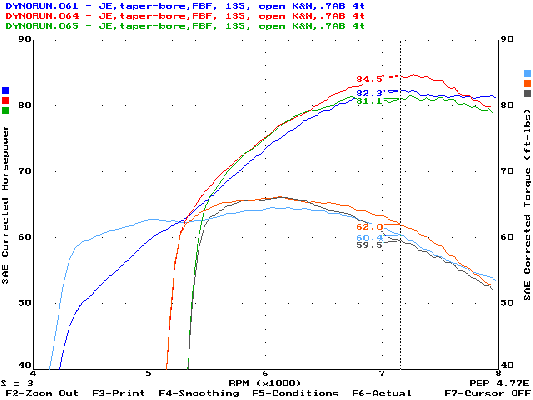
This test is a fourth gear roll-on test. If I take the engine to 6000 RPM light load, close the throttle, then open it as the RPM drops to the low 5000s, the power is 82 HP. If I hold the engine at 5500 RPM no-load, then open the throttle I get almost 85 HP. What up?
This power loss doesn't show itself during all-gear runs so the problem isn't main-jet related. I think it is emulsion tube related, and intend to make some changes there.
I don't have to put the problems into this tech report, (if I wanted to convey that I'm some kind of genius, I'd omit these little excursions) but that is the nature of this sort of undertaking. When you start out to learn, you don't always learn what you thought you were going to learn. Or, to paraphrase someone(?) 'the more you know, the more you know you don't know'.